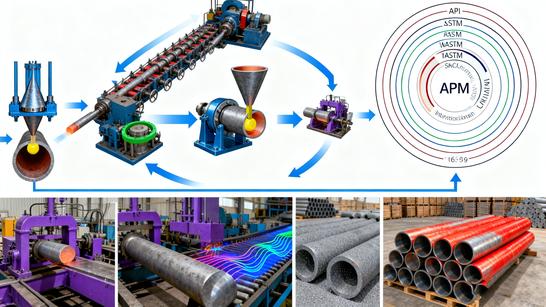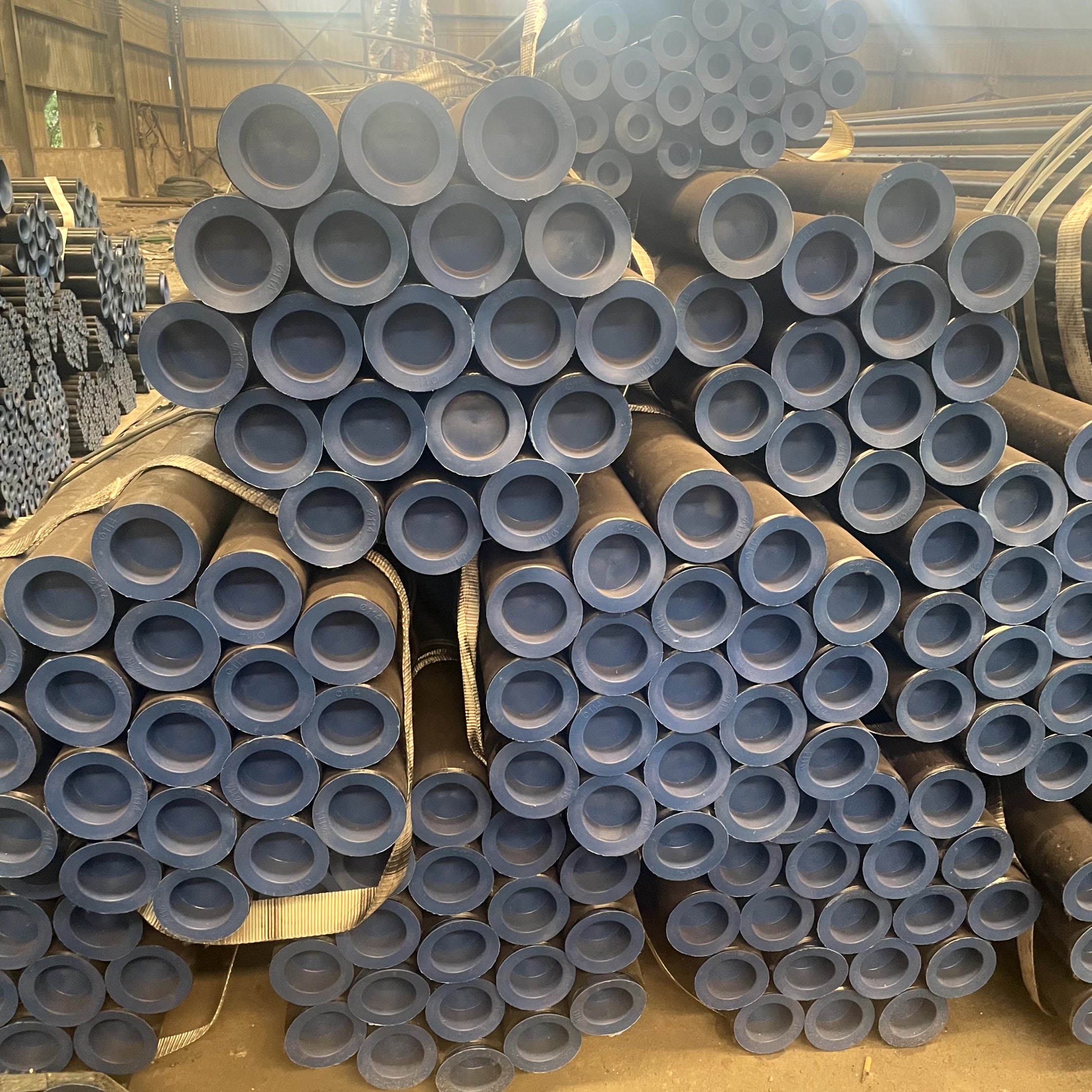In the energy, power generation, and heavy industry sectors, boiler systems are the "heart" of production, and their safe, efficient operation depends largely on the quality of core components—boiler seamless tubes, high-pressure seamless tubes, and boiler steel pipes. These products must withstand extreme conditions such as high temperatures, high pressure, and corrosive media, making material selection, standard compliance, and application matching critical. This guide focuses on key products like ASTM A192 tubes, ASTM A210 seamless pipes, EN 10216-2 boiler tubes, and power plant boiler tubes, providing a professional overview of their definitions, standards, selection criteria, and practical applications to help industry professionals make informed decisions.
1. Core Definitions: Understanding Boiler Seamless Tubes and Related Products
Before delving into standards and applications, clarifying the definitions and scope of key products is essential to avoid confusion in engineering practices.
1.1 Boiler Seamless Tube
A boiler seamless tube is a specialized seamless steel tube designed for boiler water wall panels, superheaters, reheaters, and economizers. Unlike welded tubes, seamless tubes are manufactured via extrusion or piercing, eliminating weld seams that are prone to cracking under high stress. This structure gives them excellent pressure resistance and fatigue strength, making them suitable for conveying high-temperature steam or water in boiler systems (typically operating at temperatures 300–600°C and pressures 10–30 MPa).
1.2 High-Pressure Seamless Tube
High-pressure seamless tubes are a subset of seamless tubes optimized for ultra-high-pressure environments (often >30 MPa). They are widely used in high-pressure boilers, pressure vessels, and pipeline systems in power plants and petrochemical plants. Compared to standard boiler seamless tubes, they require stricter material purity (lower sulfur, phosphorus content) and more rigorous heat treatment (e.g., quenching and tempering) to enhance toughness and creep resistance—critical for preventing catastrophic failures under long-term high-pressure loads.
1.3 Boiler Steel Pipe
The term boiler steel pipe is often used interchangeably with "boiler seamless tube" in industry, but it occasionally includes thick-walled seamless pipes for boiler headers or drum components. These pipes are made of low-alloy heat-resistant steel (e.g., 15CrMoG, 12Cr1MoVG) to withstand prolonged exposure to high temperatures without deformation. Their wall thickness ranges from 6mm to 50mm, depending on the pressure rating and structural role in the boiler.
1.4 Power Plant Boiler Tube
Power plant boiler tubes are a dedicated category of boiler seamless tubes tailored to the rigorous demands of thermal power plants. They must endure not only high temperature/pressure but also cyclic thermal stress (from startup/shutdown cycles) and corrosion from flue gas or feedwater. Key applications include superheater tubes (for heating steam to 500–600°C) and water wall tubes (for absorbing heat from fuel combustion), requiring compliance with strict industry standards to ensure long-term reliability.
2. Key Standards: ASTM A192, ASTM A210, and EN 10216-2
International standards define the material composition, mechanical properties, and testing requirements of boiler tubes, ensuring consistency and safety across global markets. Below is a detailed 解读 of three core standards:
2.1 ASTM A192 Tube (ASTM International Standard)
ASTM A192 is a specification for seamless carbon steel tubes intended for low-pressure boiler service. Key characteristics include:
- Material: Carbon steel with a carbon content of 0.25–0.35% (ensuring good weldability and formability).
- Mechanical Properties: Minimum tensile strength of 415 MPa, minimum yield strength of 240 MPa, and elongation of ≥30% (suitable for low-pressure applications <10 MPa).
- Applications: Ideal for low-pressure boiler water walls, economizers, and auxiliary pipelines in small-scale industrial boilers (e.g., textile mills, food processing plants).
- Testing Requirements: Mandatory hydrostatic testing (to verify pressure tightness) and non-destructive testing (NDT) via ultrasonic or eddy current methods to detect internal defects.
2.2 ASTM A210 Seamless Pipe (ASTM International Standard)
ASTM A210 covers seamless medium-carbon steel tubes for high-temperature service in boilers and heat exchangers, divided into two main grades:
- Grade A1: Low-carbon steel (C ≤ 0.27%) with tensile strength 415–550 MPa. Suitable for medium-pressure boilers (10–20 MPa) and low-temperature superheaters (≤450°C).
- Grade C: Higher carbon content (C 0.28–0.38%) with tensile strength 485–620 MPa. Designed for high-pressure boilers (>20 MPa) and high-temperature superheaters (450–550°C), offering better creep resistance.
- Key Advantages: Excellent thermal conductivity and oxidation resistance, making it the most widely used standard for power plant boiler tubes globally.
- Quality Control: Requires chemical composition analysis (via spectrometry), impact testing (at -20°C for Grade C), and grain size inspection to ensure material uniformity.
2.3 EN 10216-2 Boiler Tube (European Standard)
EN 10216-2 is part of the European standard series for seamless steel tubes for pressure purposes, focusing on non-alloy and alloy steel tubes for boiler applications. It is widely adopted in the EU, Middle East, and Southeast Asia, with key features:
- Material Categories: Includes non-alloy steel (e.g., P195GH, P235GH) and alloy steel (e.g., 15Mo3, 13CrMo4-5) to meet varying temperature/pressure needs.
- Temperature Range: Covers service temperatures from -40°C to 600°C, with alloy grades (e.g., 10CrMo9-10) suitable for ultra-high-temperature superheaters in large power plants.
- Compliance Requirements: More stringent than ASTM standards in terms of corrosion resistance testing (e.g., stress corrosion cracking tests for wet environments) and dimensional tolerance (±0.5mm for outer diameter).
- Application Compatibility: Often specified for boiler projects in Europe or by multinational companies, as it aligns with other European industrial standards (e.g., EN 12952 for boiler drums).
3. Selection Guide: How to Choose the Right Boiler Tube
Selecting the appropriate boiler tube requires balancing operating conditions, standard compliance, and cost-effectiveness. Follow these steps for optimal selection:
3.1 Assess Operating Conditions
- Pressure: For low-pressure boilers (<10 MPa), choose ASTM A192 tubes; for medium-pressure (10–20 MPa), ASTM A210 Gr. A1; for high-pressure (>20 MPa), ASTM A210 Gr. C or EN 10216-2 alloy grades.
- Temperature: Tubes for superheaters (>450°C) require heat-resistant alloys (e.g., ASTM A210 Gr. C, EN 10216-2 15Mo3); water walls (<350°C) can use cost-effective ASTM A192.
- Media Corrosion: In power plants with high-sulfur fuel, select EN 10216-2 13CrMo4-5 (chromium-molybdenum alloy) to resist sulfide corrosion; for high-purity feedwater, ASTM A210 is sufficient.
3.2 Verify Standard Compliance
Always confirm that tubes meet the required standard’s latest version (e.g., ASTM A210-23, EN 10216-2:2021) and include third-party certification (e.g., ASME BPVC Stamp, CE Marking for Europe). Avoid non-standard products, as they may fail under extreme conditions—for example, uncertified boiler tubes have a 30% higher risk of leakage in high-pressure service (per industry safety reports).
3.3 Consider Manufacturing Quality
Prioritize tubes from manufacturers with strict quality control processes, such as:
- Seamless production via the Mannesmann piercing process (ensures uniform wall thickness).
- Heat treatment under controlled atmospheres (to prevent oxidation and decarburization).
- 100% hydrostatic testing (at 1.5 times the design pressure) and random NDT sampling.
3.4 Evaluate Cost vs. Lifespan
While ASTM A192 tubes are cheaper than ASTM A210 or EN 10216-2, they have a shorter lifespan (5–8 years) in high-stress environments. For power plants (with boiler lifespans of 20–30 years), investing in EN 10216-2 alloy tubes reduces maintenance costs and downtime—an economic analysis shows that alloy tubes yield a 25% lower total cost of ownership over 15 years.
4. Application Cases: Power Plants and Industrial Boilers
4.1 Power Plant Boiler Tube Applications
In a 600 MW coal-fired power plant, the boiler system uses multiple tube types:
- Water Walls: ASTM A192 tubes (outer diameter 60mm, wall thickness 6mm) to absorb radiant heat from combustion, operating at 300°C and 12 MPa.
- Low-Temperature Superheaters: ASTM A210 Gr. A1 tubes (outer diameter 51mm, wall thickness 7mm) to heat steam to 400°C, withstanding 18 MPa.
- High-Temperature Superheaters: EN 10216-2 10CrMo9-10 tubes (outer diameter 42mm, wall thickness 8mm) to raise steam temperature to 540°C, resisting creep under 24 MPa.
This configuration ensures the boiler operates efficiently while meeting safety standards (e.g., China’s GB 1576-2018 for boiler water quality).
4.2 Industrial Boiler Applications
For a 10-ton/hour industrial boiler in a chemical plant:
- Economizers: ASTM A192 tubes (outer diameter 38mm, wall thickness 5mm) to preheat feedwater, reducing fuel consumption by 10%.
- Steam Drum Connecting Pipes: High-pressure seamless tubes (ASTM A210 Gr. C, outer diameter 108mm, wall thickness 12mm) to handle 22 MPa pressure, ensuring stable steam supply to chemical reactors.
5. Quality Control and Maintenance Best Practices
Even with high-quality tubes, proper quality control during installation and maintenance is critical to extend service life:
5.1 Installation Quality Control
- Ensure tube ends are properly beveled (angle 30–35°) for welding, with no burrs or cracks.
- Use submerged arc welding for thick-walled tubes (≥10mm) to ensure weld strength; perform radiographic testing (RT) on 100% of welds.
- Conduct a post-installation hydrostatic test at 1.25 times the design pressure, holding for 30 minutes to check for leaks.
5.2 Routine Maintenance
- Inspect tubes annually via ultrasonic testing to detect internal corrosion or wall thinning (replace tubes if wall thickness decreases by >20%).
- Clean water wall tubes every 2–3 years to remove slag buildup (which reduces heat transfer efficiency by up to 15%).
- Monitor tube temperatures using thermocouples; avoid overheating (temperatures exceeding 650°C cause permanent material damage).
6. Future Trends: Innovation in Boiler Tube Technology
As the industry moves toward decarbonization and high efficiency, boiler tube technology is evolving in three key areas:
- Advanced Materials: Development of nickel-based alloys (e.g., Inconel 625) for ultra-supercritical boilers (operating at 700°C, 35 MPa), which improve power plant efficiency by 5–8%.
- Smart Monitoring: Integration of sensor-embedded tubes (with fiber optic or piezoelectric sensors) to real-time monitor wall temperature, pressure, and corrosion, enabling predictive maintenance.
- Eco-Friendly Production: Adoption of green manufacturing processes (e.g., electric arc furnaces using scrap steel) to reduce carbon emissions in tube production by 30%—aligning with global net-zero goals.
Conclusion
Boiler seamless tubes, high-pressure seamless tubes, and their standard-specific variants (ASTM A192, ASTM A210, EN 10216-2) are indispensable to safe, efficient industrial and power generation operations. By understanding product definitions, standard requirements, and selection criteria, industry professionals can optimize boiler performance, reduce downtime, and ensure long-term safety. Whether for a small industrial boiler or a large power plant, choosing the right tube—backed by compliance, quality, and proactive maintenance—is the foundation of reliable operation. As technology advances, staying updated on material innovations and smart monitoring tools will be key to staying ahead in the evolving energy landscape. For customized advice on tube selection or standard compliance, consult with certified manufacturers or industry experts to meet your specific project needs.





